What Is Plastic-Free Packaging?
- Leo Xia

- Jul 22
- 4 min read
Quick Content Reach:
Plastic waste is choking our oceans, overwhelming landfills, and harming wildlife. As a buyer, you know consumers are demanding greener alternatives.
The problem? Many packaging options still use hidden plastics or non-recyclable laminates. Even brands that claim to be "eco" may be greenwashing.
In this article, I’ll explain what true plastic-free packaging means, which materials to consider, and how companies like Lion Paper Products are implementing practical, scalable, and sustainable solutions. Whether you’re sourcing stationery, lifestyle products, or packaging itself, this is your roadmap to real sustainability.
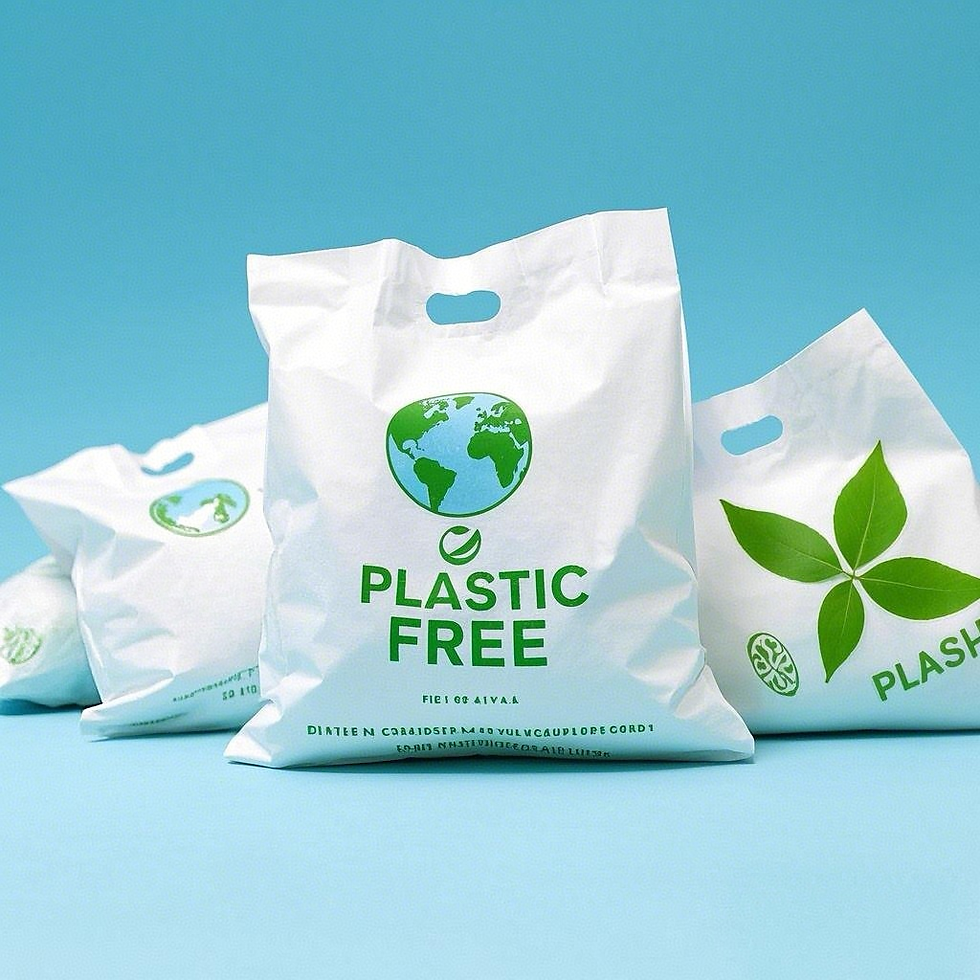
1. Plastic-Free Packaging Explained
1.1 Definition & Principles
Plastic-free packaging means any primary, secondary or transit pack that eliminates fossil-based plastics, opting for renewable, reusable or easily recyclable substrates instead.
1.2 Why “Reduce-Reuse-Recycle” Still Matters
True plastic-free programs start with reduction—light-weighting and right-sizing—before substituting materials, then design for reuse and curb-side recyclability.
1.3 Typical Materials & Emerging Tech
Material | Key Traits |
FSC paper & cardboard | Versatile, 68-75 % recycling rate in EU |
Glass | Infinite recyclability; perceived most sustainable by 55 % of U.S. consumers McKinsey & Company |
Metal (tin, aluminium) | High barrier, 76 % average global recycling |
Mycelium (“mushroom”) | Home-compostable, molded-cushion alternative Mushroom Packaging |
Seaweed film | Edible or backyard-compostable thin films FutureBridge |
2. Why Plastic-Free Packaging Matters
2.1 Environmental Imperative
450 million t of new plastic produced annually; 350 million t becomes waste, and 1-2 million t leaks into oceans every year Our World in Data.
Paper, glass and metal emit 10-30 % fewer lifecycle greenhouse gases than equivalent plastic formats in recent LCAs Ranpak.
2.2 Regulatory Pressure
The EU’s Packaging & Packaging Waste Regulation (PPWR) adopted Dec 2024 sets binding reuse quotas and restricts single-use plastic condiment packs, hotel minis and produce bags European Council. Similar bans are rolling out in California, Canada and ASEAN.
2.3 Consumer & B2B Demand
McKinsey’s 2025 multi-country survey found recyclability is now the #1 sustainability attribute influencing packaging choice; glass, paper and metal top the list for perceived eco-performance McKinsey & Company.
2.4 Brand Equity & ESG
Brands adopting plastic-free packaging saw online conversion lifts of 4-7 % and wholesale buyers reported reduced compliance audits—improving both CSR scores and bottom-line resilience.
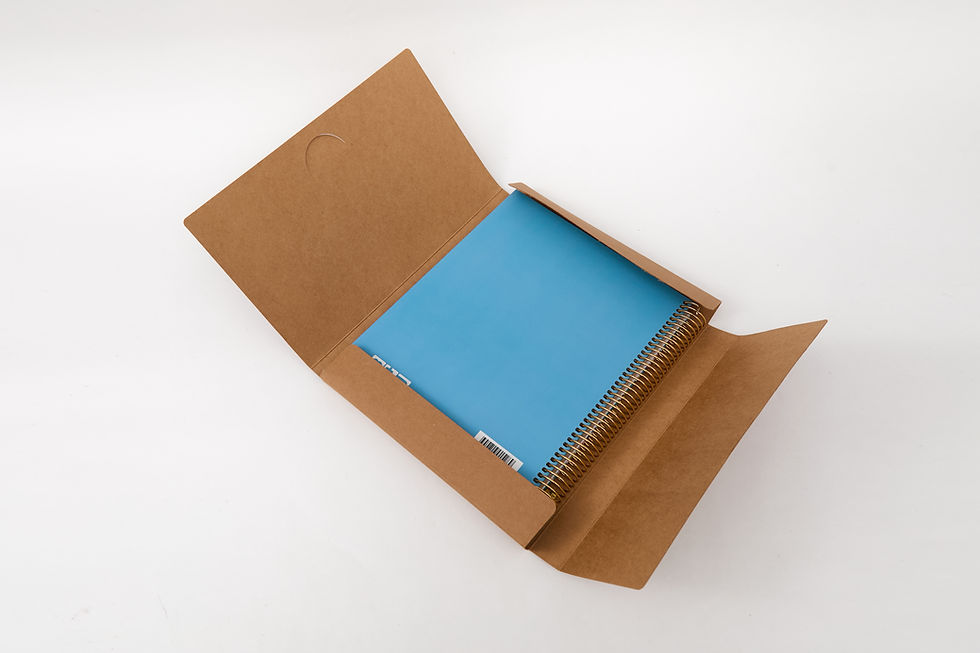
3. Plastic-Free Materials & Technologies
3.1 Advanced Paper Solutions
Water-resistant dispersion-coated papers now pass Cobb < 25 and FDA food-contact tests, replacing PE-lined wraps.
3.2 Glass & Metal for Refill Loops
Reusable tin cans and borosilicate jars slot into closed-loop logistics, achieving 5-20 turns before remelting—cutting virgin inputs by 80 %.
3.3 Bio-Based Breakthroughs
Mycelium foam cushions engineered by Ecovative match EPS drop-test standards while composting in 45 days Mushroom Packaging.
Seaweed polymers (e.g., Kelpi, Sway) replace LDPE films in garment bags and sachets, degrading without micro-plastics FutureBridge.
3.4 Minimalist & Refill Models
Refill pouches or dissolvable tablet packs cut up to 70 % transport volume.
4. Transition Roadmap for Buyers
Audit your SKU lineup—map plastic “hot-spots” across secondary and tertiary packaging.
Engage R&D & suppliers—request ASTM D6400 or EN 13432 compostability data.
Prototype & test—IST-6A drop tests, Cobb water resistance, climate-chamber conditioning.
Optimize logistics—revise pallet patterns to offset weight shifts from glass/metal.
Run a cost-benefit model factoring EPR fees, carbon tax savings and consumer price elasticity.
5. Case Study – Lion Paper Products Solutions
5.1 Eliminating OPP Bags
Since 2023 we have offered zero-OPP notebook bundles using self-locking bellybands for U.S. buyers, cutting 1.2 t plastic per 100 k units.

5.2 Biodegradable Films
Where moisture barriers are mandatory, we specify PLA/PBAT blend films certified home-compostable to TÜV OK Home standard.
5.3 Paper-Based Packs
Rigid carton sleeves and corrugated mailers replace bubble mailers for planners.
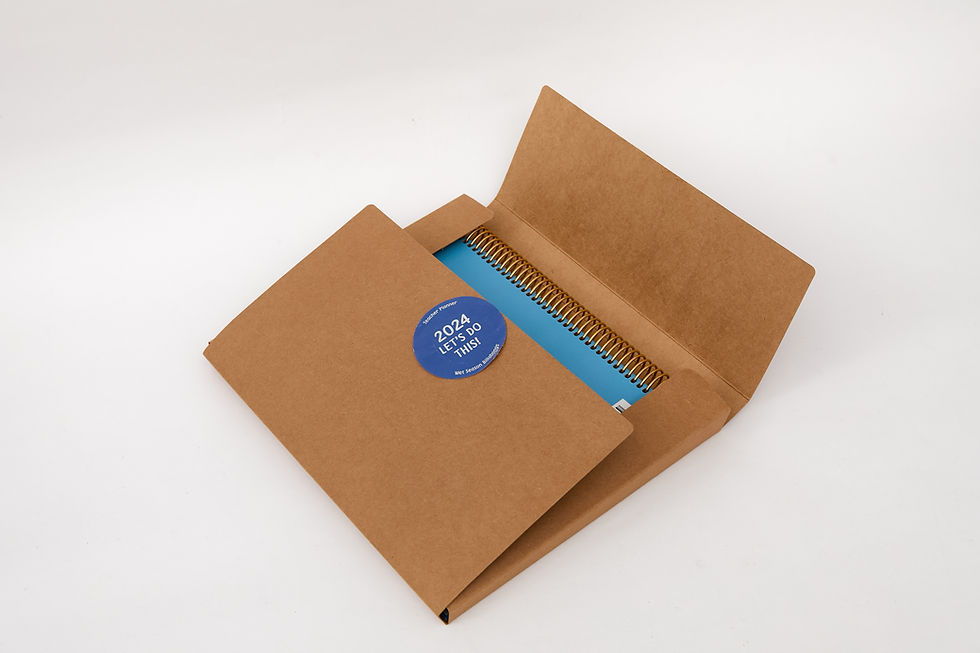
5.4 Closed-Loop Waste
Internal carton off-cuts sorted and reused for divider pads; non-reusable scraps baled to local recyclers; initiative slashed landfill by 35 %.
5.5 Certifications & Worker Safety
We back our program with ISO 9001, FAMA, CPSIA, Prop 65, plus BSCI worker-welfare audits—proving sustainability can coexist with fair labor.

6. Challenges & Future Outlook
Barrier properties: Bio-films must reach WVTR < 5 g/m²·day for some foods.
Cost parity: Scale and localized fiber sourcing are narrowing the gap; market for plastic-free packaging is forecast to surpass US $196 billion by 2025 The Business Research Company.
Infrastructure: Harmonized curb-side collection and composting capacity remain uneven.
Innovation pipeline: Expect nano-cellulose coatings, algae-ink prints and AI-guided material optimization by 2027.
Conclusion
Plastic-free packaging is no longer a niche experiment—it’s an operational must-have for stationery and gifting supply chains. By choosing proven paper-based, glass, metal or bio-composite options, buyers can align with tightening laws, satisfy eco-minded customers and unlock measurable cost advantages. Lion Paper Products stands ready—with ISO-audited factories in China, Cambodia and South Korea—to co-create packaging that carries your brand story without carrying plastic.
Ready to make your next notebook shipment plastic-free? Contact us for more details of plastic-free packaging solutions.
—Leo Xia, CEO, Lion Paper Products
You design, we deliver.
FAQs:
Q1: What counts as plastic-free packaging?
A: Strictly speaking, any pack fully free of fossil-based plastics, including inks and laminates.
Q2: Is “biodegradable plastic” considered plastic-free?
A: If it’s PLA-only and fossil-plastic-free, many standards accept it, but policy definitions vary.
Q3: How does plastic-free affect cost?
A: Typical cost uplift ranges 3-12 %, often offset by lower EPR fees and brand premium.
Q4: Can I mix plastic-free and conventional packs in one shipment?
A: Yes, but label clearly to aid sorting and avoid cross-contamination.
Q5: Does plastic-free improve brand perception?
A: Studies show 60 % of Gen Z favor brands with plastic-free claims.
Are you looking for a reliable manufacturer? Reach out to Lion Paper for a free quote and consultation. Let’s collaborate on creating custom writing paper products that will set your brand apart from the competition!



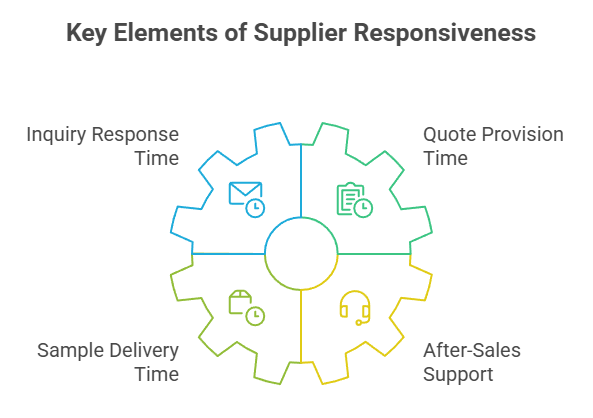
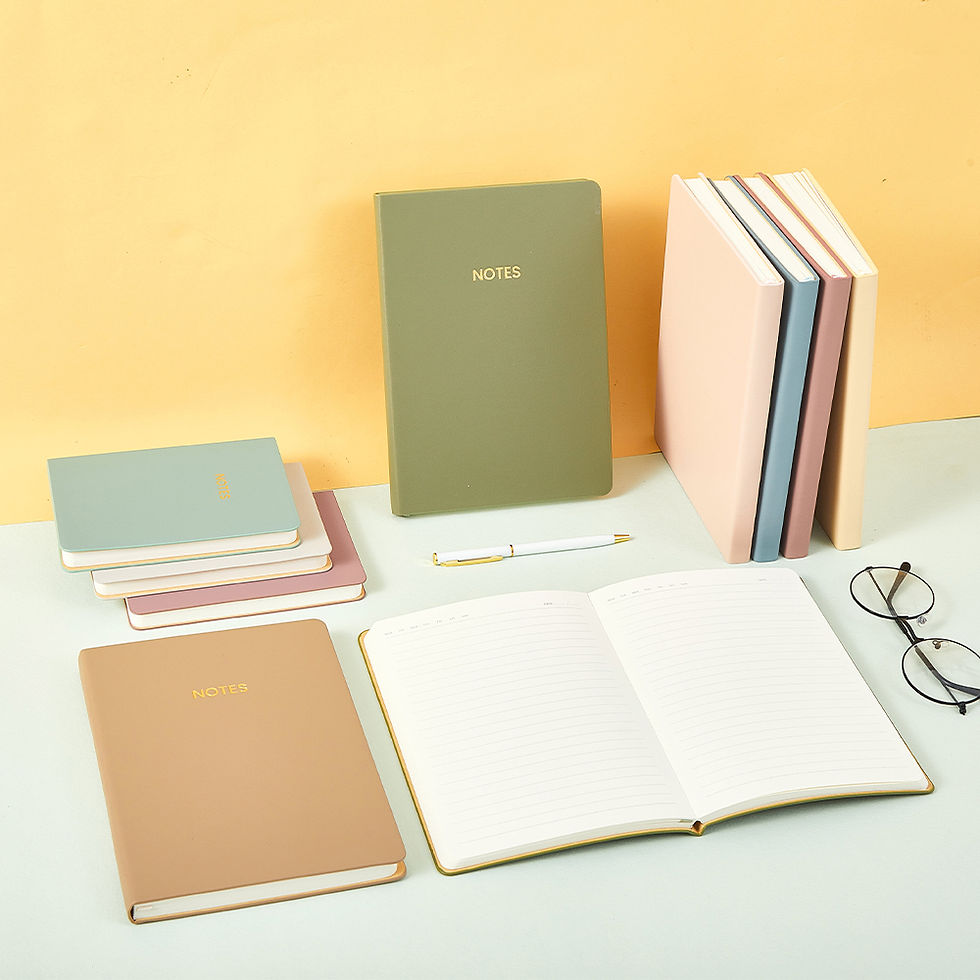

Comments